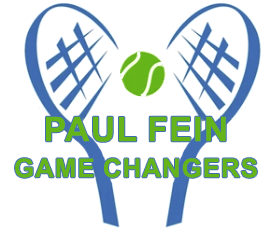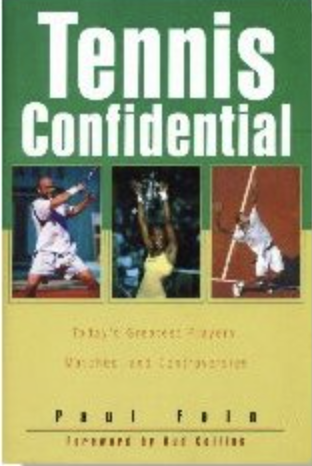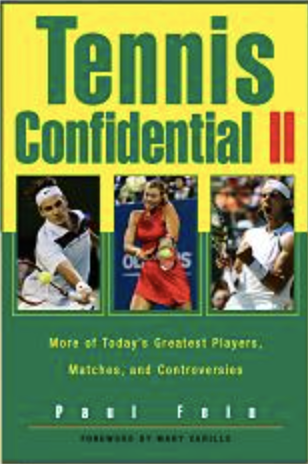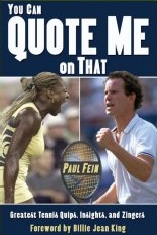Backhand Debate, Depth in Men's Tennis, and Hurkacz's Game
Hits: 50
Nobody asked me, but . . .
Daniil Medvedev may not have the most exciting game, but he relishes lively debates. When Tennis Channel’s topnotch interviewer Prakash Amritraj asked him about whether two-handed backhands will endure in pro tennis, Daniil replied, “I think we’ll still have amazing players with one-handed backhands.” He cited No. 4 Stefanos Tsitsipas and No. 18 Lorenzo Musetti as evidence.
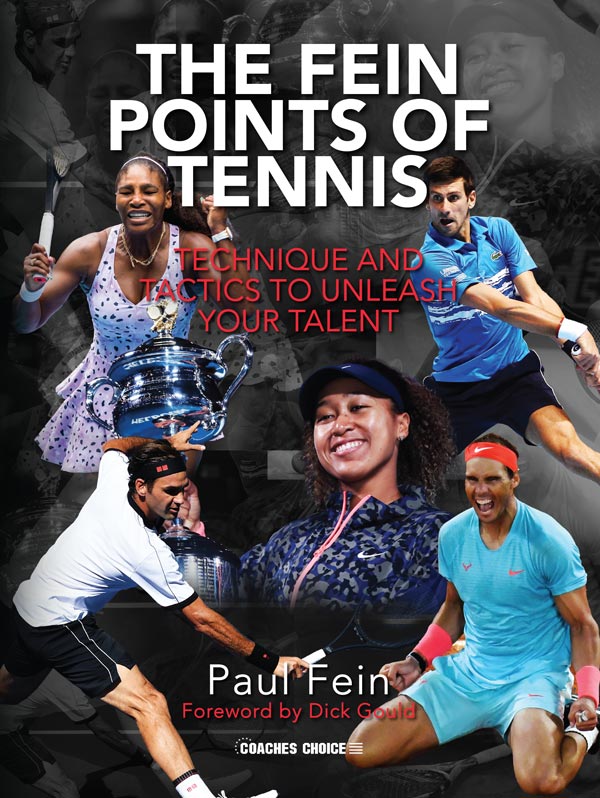
Other notable ATP players with one-handed backhands include No. 19 Grigor Dimitrov, No. 22 Denis Shapovalov, No. 28 Dan Evans, No. 29 Chris Eubanks, No. 51 Stan Wawrinka, No. 52 Daniel Altmaier, No. 53 Richard Gasquet, No. 66 Dusan Lajovic, and No. 83 Dominic Thiem, the last one-hander to win a Grand Slam singles title.
On the WTA Tour, on any given week there are usually just one or two players with a one-handed backhand ranked in the top 100 but none in the top 20. In fact, the last great one-handed women’s champion, Justine Henin, won her last Grand Slam title way back in 2007 at the US Open.
What’s most relevant is that all of the above players have better forehands than backhands, even Wawrinka, who has the most powerful one-handed backhand. And all of these one-handed backhands break down sooner or later and either a little or a lot in nearly every match against tough opponents.
Tsitsipas, at age 25, has only an outside chance to win a major, perhaps the French Open. Despite the fact that he boasts a powerful, broad-shouldered, 6’4” physique, is highly athletic, and can hit serves more than 130 mph, he often averages under 70 mph on his loopy one-handed backhand.
By contrast, the slightly built 5’6” Camila Giorgi typically averages just around 80 mph with her double-hander. Many women, in fact, average 75 mph or more. The two-hander simply generates significantly more power (often effortlessly) and handles the power of opponents much better.
***** ***** ****
On a different topic, Medvedev said, “When you play top 50 guys and you lose 5% of your focus, you can lose the match.” Daniil would know. A week earlier, the 27-year-old Russian was upset 7-6, 7-5 by No. 18 Alex De Minaur. Before that, he lost to No. 23 Roberto Bautista Agut, No. 52 Adrian Mannarino, No. 172 Thiago Seyboth Wild, No. 121 Aslan Karatsev, and No. 31 Sebastian Korda this year.
What should we conclude when the No. 3 player in the world, a tough competitor who generally plays high-percentage tennis, loses fairly often to lower-ranked players?
The obvious answer is that pro tennis has phenomenal depth. Jimmy Arias said, “Every player in the top 1,000 is very good.”
If only the top 104-ranked players can get directly in the main draws at Grand Slam events and less than two-thirds of that number at Masters 1000 tournaments and with players aged from 18 to 38 in these draws—a 20-year span—and tennis is probably the most international sport after football (soccer), then what else can we conclude?
For starters, unless your son is tall—at least 6 feet and preferably 6’2” to 6’6”—is very athletic, starts playing tennis at an early age, and is extremely dedicated, his chances of becoming a top 75 pro are very small indeed.
Contrast that with his chances of becoming one of the 750 players on Major League Baseball teams or the 360 players on National Basketball Association teams. The National Football League’s teams have many more players, but pro careers in this brutal collision sport average fewer than four years. I’m not familiar with pro football (soccer) around the world, but the competition must also be extremely intense for roster spots.
***** ***** ****
In my US Open prediction article—written for an Asian magazine with a very early August 10 deadline—I analyzed the chances of eight players I considered to be the favorites. I also picked five dark horses.
I didn’t list Hubert Hurkacz among these 13 players. That could prove to be a mistake.
However, despite good wins this year over Shapovalov (Australian Open), Musetti (Wimbledon), and Medvedev (Cincinnati), No. 20-ranked Hurkacz has all too often failed to win big games in close matches. Why hasn’t the 26-year-old Pole won these matches and fulfilled his top-10 potential?
My theory is that one major reason is that he hasn’t meshed his strengths effectively. Hubie has a terrific serve—he ranks No.1 on the ATP Stats Leaderboard with a 297.0 Serve Rating—and an excellent volley. But he rarely serves and volleys. At 6’5”, he certainly has the reach to cover passing shots and lobs.
However, in this era where most players have excellent serve returns and passing shots, serving and volleying is more difficult than ever. His Eastern forehand, while solid, usually lacks the topspin and power of elite players such as Djokovic, Alcaraz, Ruud, and Sinner. His backhand is also solid. But neither stroke is a huge weapon.
I believe Hubie has to get to the net much more often. Should he do that by serving and volleying? Crushing groundstrokes and rushing net? Or both?
Much depends on his opponent’s style and strengths, the court surface, the wind, and what works best in a given match. But Hurkacz and Craig Boynton, his highly regarded coach, can determine the right formula for net-rushing.
I welcome your thoughts.
